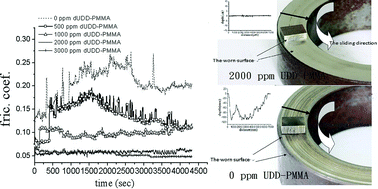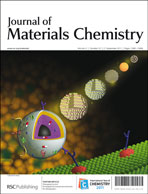This paper presents a novel approach for de-agglomeration and surface functionalization of detonation nanodiamond at the same time in one pot. Various kinds of polymer chains (e.g., polystyrene, polymethyl methacrylate and polyglycidyl methacrylate) can be chemically grafted onto the de-agglomerated nanodiamond by the wet-stirred-media-milling process. The surface grafted polymers were identified by FTIR, TGA and TEM. The polymer grafted onto surface of de-agglomerated nanodiamond was used as an additive in lubricant oil. We investigated the tribological properties of the two-phase lubricant oil and nanodiamond–polymer composite. The results show that this kind of nanodiamond–polymer composite possesses better anti-wear, friction-reduction and load-carrying capacity than the nanodiamond additive. Impressively, the addition of 3000 ppm nanodiamond–polymer composite to lubricating oil can reduce friction coefficient by 75% and wear rate by ∼99%. The polymer grafted onto the nanodiamond significantly improves durability and lubricant performance of the nanodiamond additive. This is because nanodiamond–polymer can be more compatible with lubricant oil than nanodiamond. The surface functionalization of nanodiamond can significantly affect lubricant performance and the durability of nanodiamond additive, which has not been discussed in previous papers.

You have access to this article
 Please wait while we load your content...
Something went wrong. Try again?
Please wait while we load your content...
Something went wrong. Try again?


 Please wait while we load your content...
Please wait while we load your content...